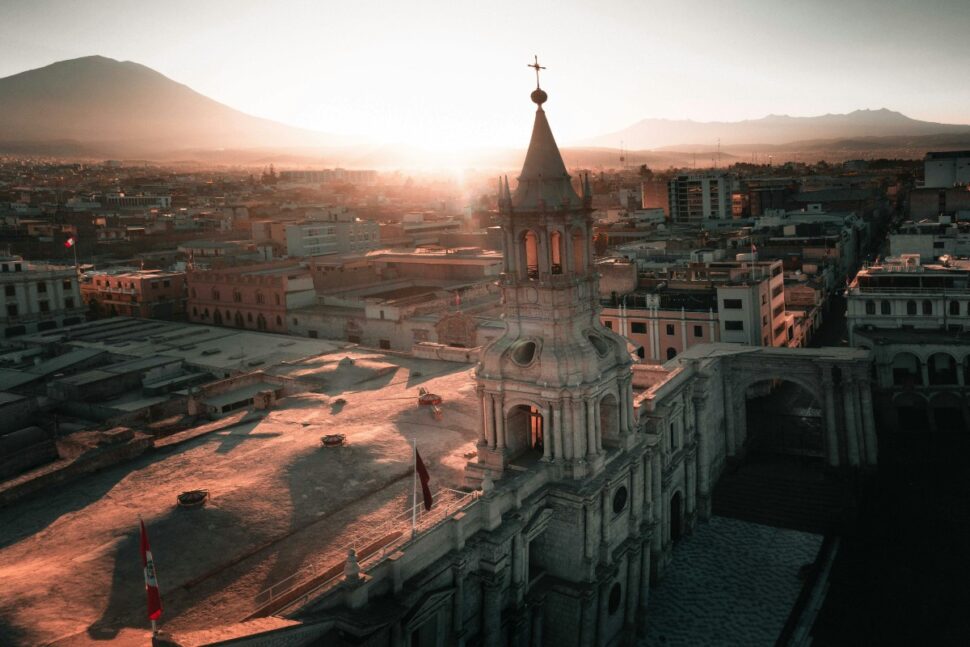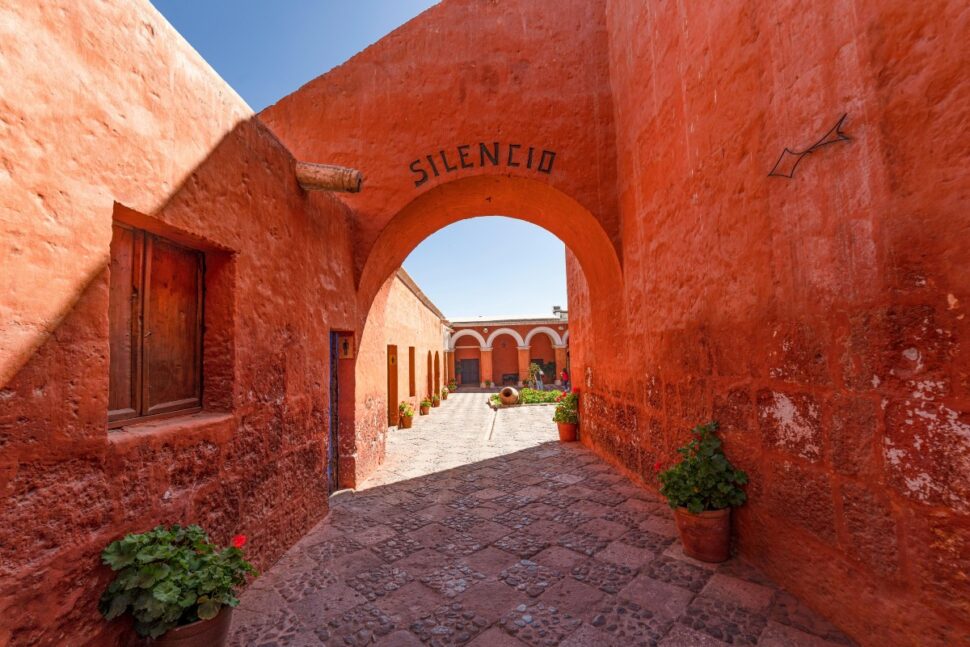Set in the foothills of the Misti Volcano, the ancient city of Arequipa is a sight to behold. Known affectionately as the ‘White City,’ Arequipa is carved and constructed from the gleaming sillar. As you arrive in Arequipa, the first thing that captures your attention is the dazzling white facades of the buildings. Sillar, a pearly white volcanic rock, gives the town a striking and ethereal appearance.
Most importantly, using sillar is not just an architectural choice but a reflection of Arequipa’s adaptation to its environment. This lightweight yet resilient material has allowed the city to endure earthquakes. At the same time, its white hue reflects solar radiation, keeping the interiors of buildings cool—a necessity in the sun-drenched Andean climate.
Getting to Know Arequipa

Walking through Arequipa, one can’t help but feel the layers of history and culture that have shaped the city. The historic center of Arequipa, a UNESCO World Heritage Site, boasts several impressive colonial-era structures, including the iconic Santa Catalina Monastery. The monastery is a sprawling complex of cloisters, plazas, and ornate chapels. Its blue and red walls contrast against the pristine white stone.
Beyond the monastery, the Plaza de Armas stands as the soul of Arequipa, surrounded by majestic buildings adorned with intricate carvings and balconies. The Basilica Cathedral of Arequipa, with its twin towers and neoclassical design, is a must-visit for architecture lovers. Inside, the cathedral houses a remarkable collection of religious art and artifacts.
The city’s rich cultural heritage extends to its museums, such as the Museo Santuarios Andinos, where the mummified remains of the Inca “Ice Maiden” are on display. This archaeological gem sheds light on the ancient rituals and beliefs of the indigenous people who once inhabited the region.
Beyond the City

Arequipa is also a city of intellectuals and artists. It is home to the revered Peruvian writer Mario Vargas Llosa, whose childhood home now serves as a cultural center and museum. The city’s commitment to preserving its literary and artistic heritage is palpable in its numerous galleries, cultural centers, and libraries.
Arequipa’s attractiveness also extends outside its city limits. The Colca Canyon, one of the world’s deepest canyons, is only a few hours away and offers stunning views, hot springs, and the opportunity to spot the majestic Andean condors soaring above. Closer to the city, the Misti Volcano is another perfect place to view the city and the vast Peruvian landscape beyond.





